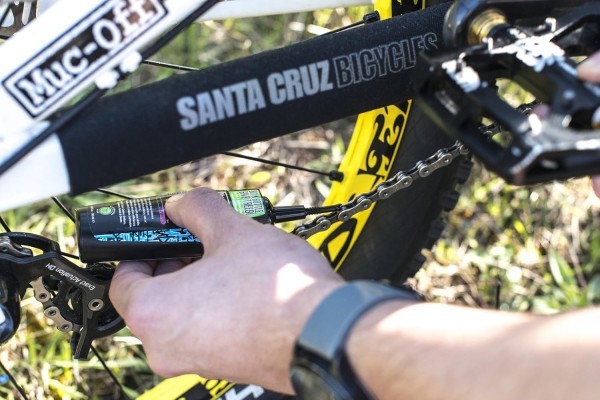If you’ve ever wondered about the peculiar Presta Valve, ponder no more. This slender, sleek valve is a staple in the world of cycling, but its origins and intricacies might surprise you. From its unique design to its practical advantages, the Presta Valve has its own set of quirks that set it apart from the more common Schrader Valve. What makes this valve a preferred choice for many cyclists? Let’s unravel the mystery behind the Presta Valve and discover the secrets hidden within its slender form.
1. History of Presta Valve

Tracing back to the early 20th century, the history of the Presta valve reveals a significant evolution in bicycle tire technology. Originally developed by French engineer Maurice Schrader, the Presta valve, also known as the Sclaverand valve, provided a more efficient and reliable alternative to its predecessor.
The Presta valve’s slender design allowed for higher tire pressures, improving the overall performance and safety of bicycles. Over the years, this valve has become a staple in the cycling community, particularly in road and mountain biking. Its ability to retain pressure and accommodate various rim depths has solidified its place as a preferred choice among cyclists worldwide.
2. Anatomy of Presta Valve
The Presta valve comprises several key components that collectively contribute to its functionality and efficiency in regulating tire pressure.
- The valve stem is a slender metal shaft that extends from the top cap and is threaded to secure it to the rim.
- The valve core, a small internal component, can be unscrewed to allow for inflation or deflation of the tire.
- A locking nut assists in securing the valve to the rim and preventing air leakage.
- The rubber O-ring provides an airtight seal when the valve is closed, ensuring optimal tire pressure retention.
3. Advantages of Presta Valve
To fully comprehend the advantages of the Presta valve, it’s essential to delve into its unique design features and practical benefits. The Presta valve offers several advantages over other valve types, making it a preferred choice for many cyclists. Here are some key benefits:
- High-Pressure Capacity: Presta valves can withstand high pressure, making them suitable for road bikes and other high-performance bicycles.
- Lightweight Construction: The slender design of Presta valves reduces overall weight, ideal for cyclists looking to minimize bike weight.
- Seal Reliability: The O-ring seal on Presta valves ensures a tight seal, preventing air leakage during rides.
- Compatibility with Narrow Rims: Presta valves fit narrow rims more easily than Schrader valves, allowing for better wheel design options.
- Prestigious Appeal: Among cycling enthusiasts, Presta valves are often associated with high performance and a professional cycling aesthetic.
4. How to Inflate Presta Valve
When inflating a Presta valve, ensure you have the necessary equipment and follow these step-by-step instructions for a successful and efficient process.
To begin, unscrew the top cap of the Presta valve by turning it counterclockwise. Next, press down on the tip of the valve to release any built-up air pressure inside.
Attach the pump nozzle securely onto the valve stem. Make sure the nozzle is straight to prevent air from escaping during inflation. Pump air into the tire by moving the pump handle up and down.
Monitor the tire pressure using a gauge to reach the desired level. Once inflated, remove the pump carefully by unscrewing it from the valve.
5. Common Misconceptions About Presta Valve
Avoiding misunderstandings about Presta valves is crucial for proper maintenance and usage of your bicycle. Here are some common misconceptions about Presta valves that you should be aware of:
- Misconception 1: Presta valves are less durable than Schrader valves.
- Misconception 2: Presta valves are only for high-performance bikes.
- Misconception 3: Presta valves require special pumps that are hard to find.
- Misconception 4: Presta valves are difficult to inflate.
- Misconception 5: Presta valves aren’t suitable for tubeless setups.
Frequently Asked Questions
Are Presta Valves Compatible With All Types of Bike Pumps?
Yes, Presta valves are not compatible with all types of bike pumps. You need a pump with a Presta valve head or an adapter for other pumps. Ensure your pump is suitable to inflate Presta valves.
Can Presta Valves Be Used for Tubeless Tire Setups?
When setting up tubeless tires, you’ll find that Presta valves are a popular choice due to their compatibility with tubeless rims. Ensure a tight seal for optimal performance. Remember to use the appropriate tools.
Do Presta Valves Require Any Special Maintenance or Care?
To ensure optimal performance, periodically check the Presta valve for debris, ensure the valve core is tightened, and use a Presta valve-specific pump. With these simple steps, you can maintain your Presta valves hassle-free.
Are There Any Specific Situations Where a Presta Valve Would Be More Beneficial Than a Schrader Valve?
In certain situations, you may find Presta valves more beneficial than Schrader valves due to their higher pressure capacity and compatibility with narrow rims. They are common in road bikes and performance-oriented applications.
Are There Any Unique Accessories or Tools Designed Specifically for Presta Valves?
When dealing with Presta valves, you’ll find specialized tools like valve core removers, adapters, and pressure gauges tailored to ensure precise maintenance. These accessories cater to the unique design of Presta valves, enhancing your experience.
Conclusion
The Presta valve isn’t just a simple inflation device – it’s a revolutionary piece of engineering that has transformed the cycling industry. With its sleek design, easy inflation process, and superior performance, the Presta valve stands head and shoulders above its competitors. So next time you’re inflating your tires, remember that you’re not just using any valve – you’re using the Presta valve, the king of all valves.





